One of the signs of spring in New Hampshire is the hundreds of thousands of brook trout, brown trout and rainbow trout that get placed into lakes, streams and ponds all over the state.
The fish are raised in six state-owned fish hatcheries until they reach a certain size, usually at two years old, and then trucked to waterways and tossed in – or, in the case of remote ponds, dropped from helicopters – to provide sport for the anglers that buy some 150,000 fishing licenses each year.
New Hampshire maintains an updated list of which waterways have been stocked, at wildlife.state.nh.us/fishing/trout-stocking.html. It plans to use $55 million in federal relief funds to update the state’s hatcheries and build two new ones.
Like many states, New Hampshire has stocked waterways with fish for a century to help lure the fishing audience. Rainbow trout, mostly obtained from federal fish hatcheries, are a separate species that has been bred specifically to grow quickly and provide good sport for anglers.
The practice of stocking has drawn criticism from those concerned that these non-native fish are driving out native trout, which has led to some areas being considered off limits from future fish stocking. Because they concentrate fish populations, hatcheries generate large amounts of waste that can pollute local waterways, an issue that has plagued the Powder Mill Hatchery in New Durham.
- New Hampshire Fish and Game Conservation Officer trainee Valladares throws a fishnet full of trout into the Soucook River in Loudon earlier this month. Valladares helped stock the river with both Brown and Brook trout.
- New Hampshire Fish Culturist Chad Elliot hands a net full of trout to Fish and Game Conservation officer trainee Austin Vallandares at the Soucook River earlier this month.
- New Hampshire Fish and Game Conservation Officer trainee Valladares throws a fishnet full of trout into the Soucook River in Loudon earlier this month. Valladares helped stock the river with both Brown and Brook trout.
- Brown trout get ready to be thrown into the Soucook River in Loudon earlier this month.
- New Hampshire Fish and Game Conservation Officer trainee Valladares throws a fishnet full of trout into the Soucook River in Loudon earlier this month. Valladares helped stock the river with both Brown and Brook trout.

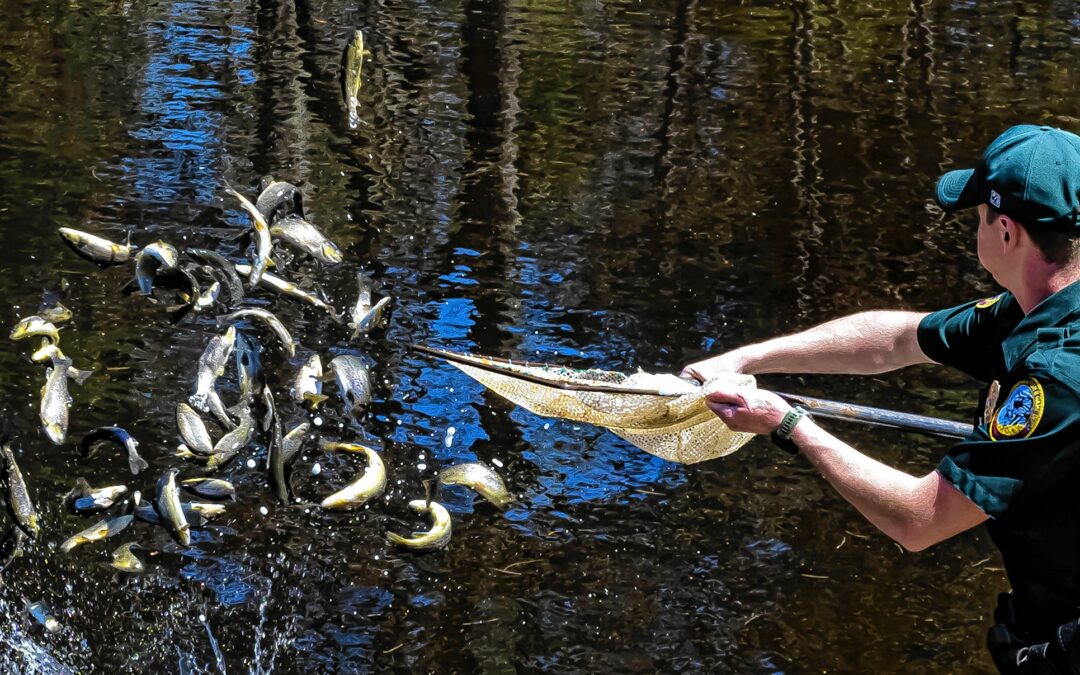
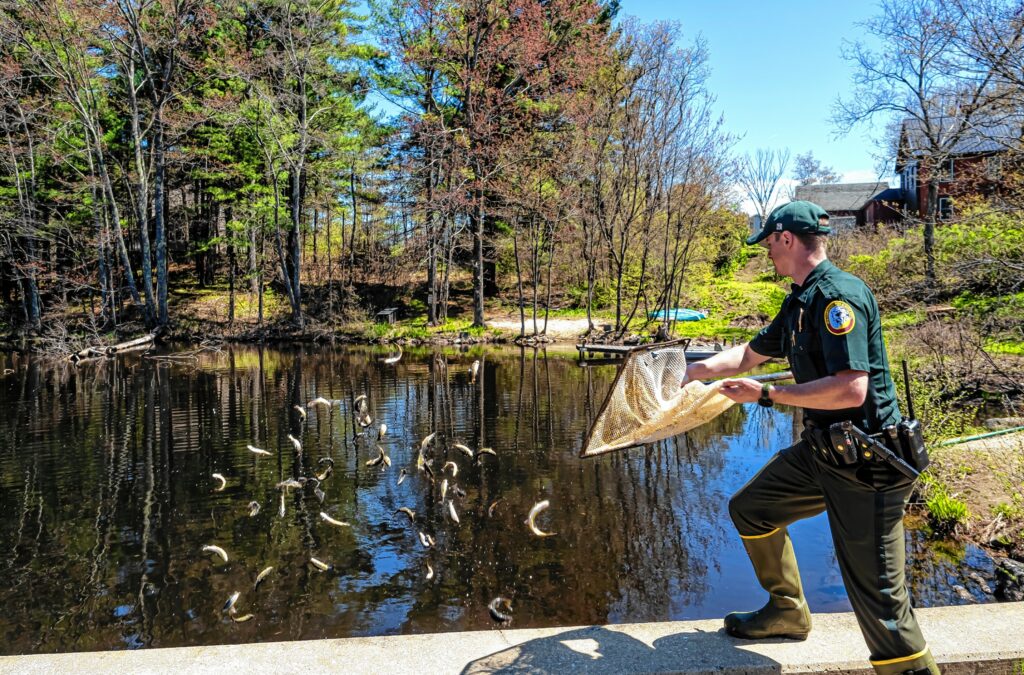
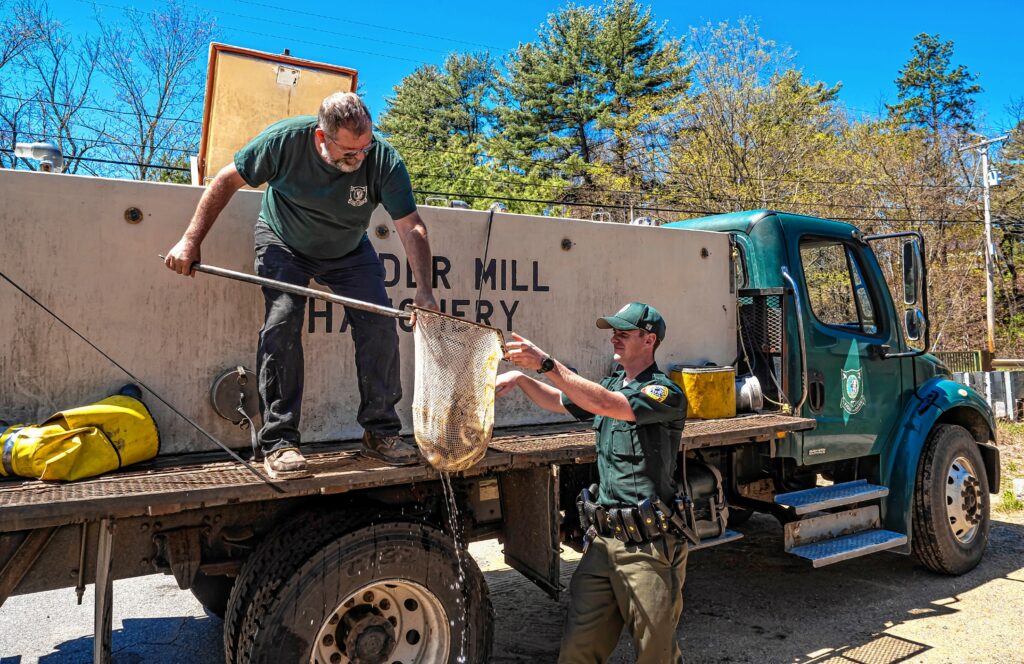
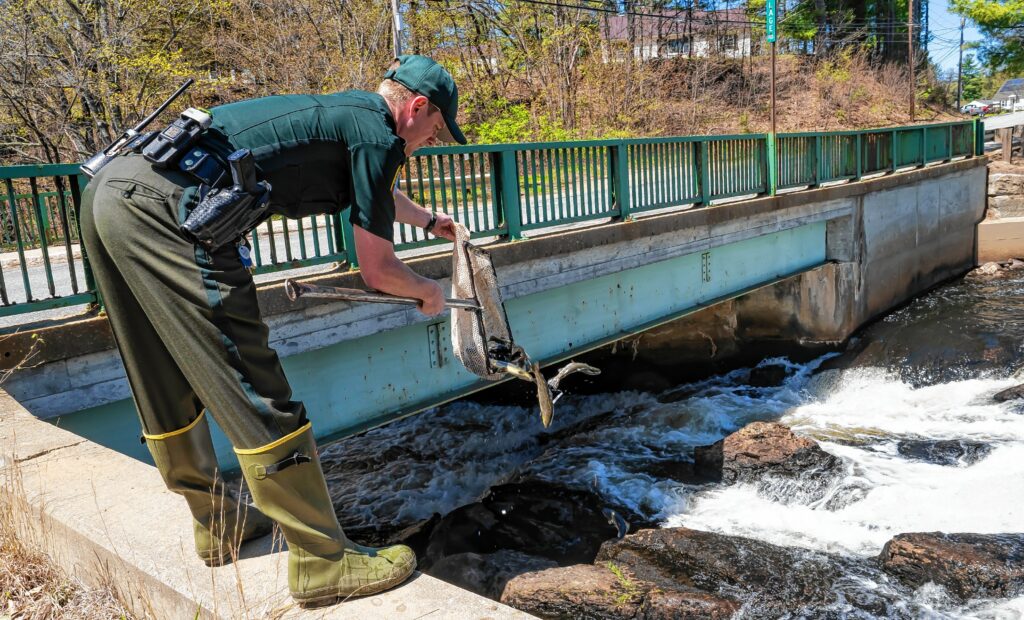
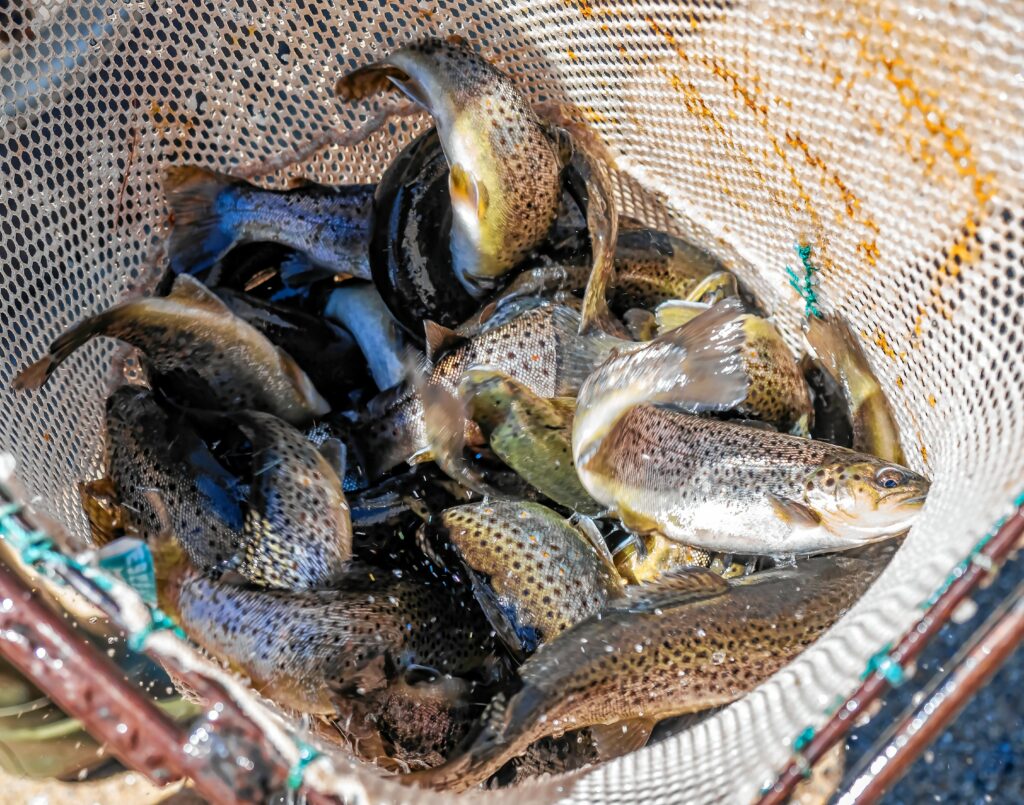
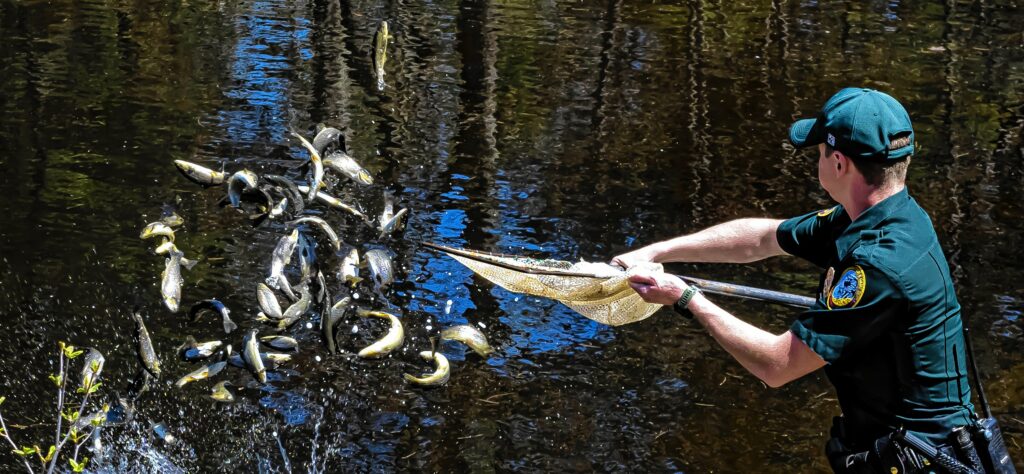
 View Print Edition
View Print Edition